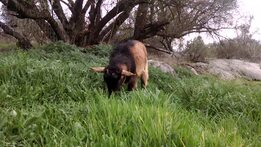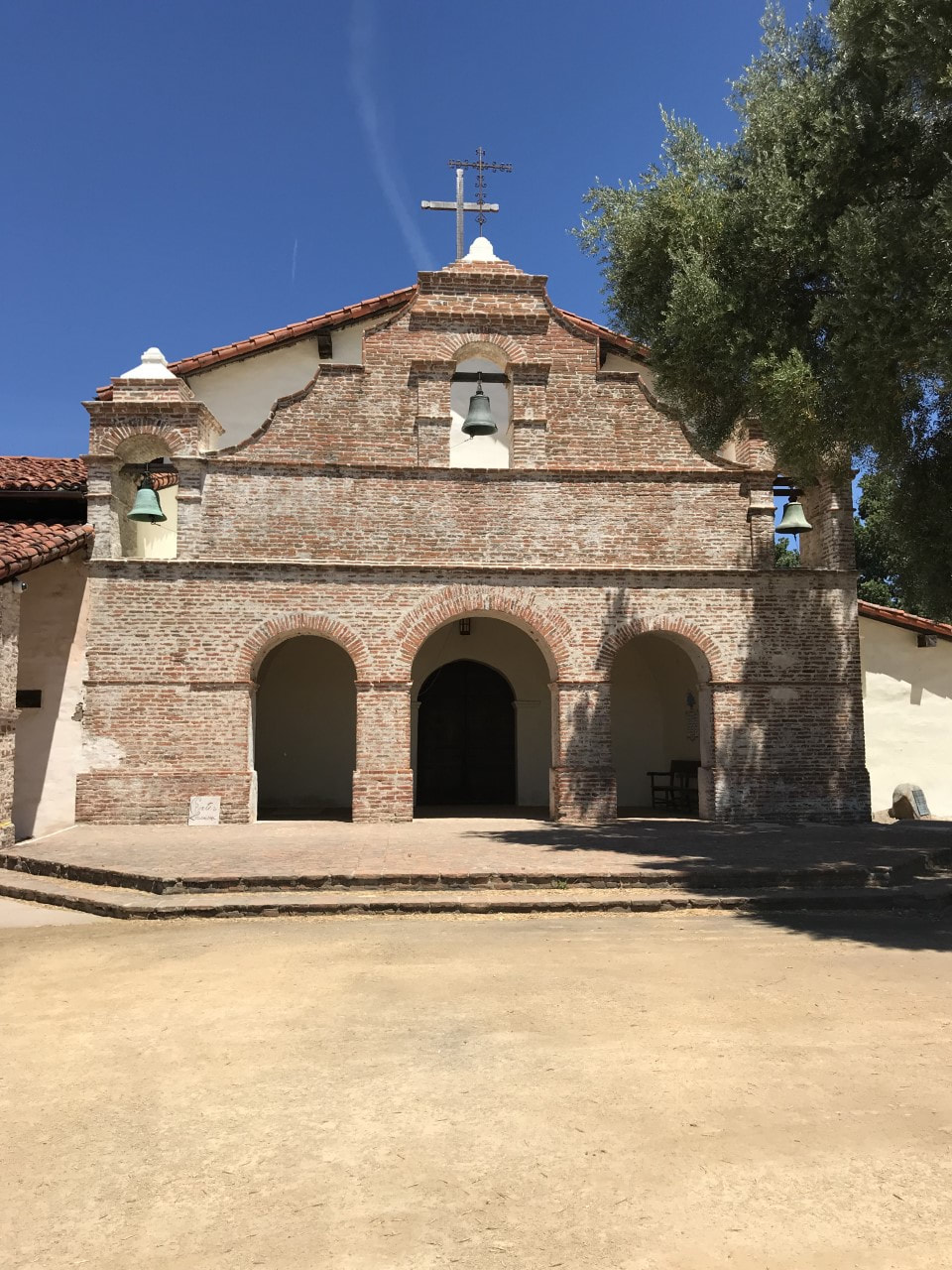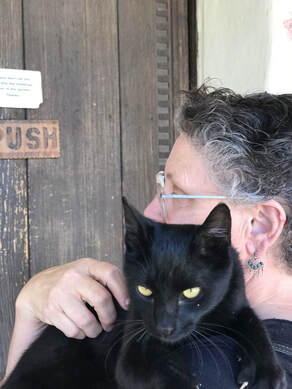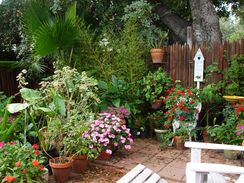In my September 2017 blog, “A California Road Trip,” Kathleen and I traveled north from my brother John’s home in Milpitas, California, to Loomis in the foothills of the Sierra Nevada mountains. Along the route, we passed Mission San Jose, namesake of the sprawling city of San Jose, now the home of Silicon Valley. Mission Santa Clara de Asis (St. Clare of Assisi,) established in 1777 and now surrounded by Santa Clara University, is located a day’s walk to the south west.
Just last month, my July 2019 blog, “Sun and Sand in Santa Cruz,” included a visit to Mission Hill, where Holy Cross church sits on the original location of Mission Santa Cruz. Indeed, it is difficult to take a road trip in California without bumping into one of the historic California Missions. This year on my annual visit to California, Kathleen and I decided to travel south from our headquarters at my sister Margaret’s home in Watsonville, to explore two of the lesser known and more remote Missions, Soledad and San Antonio de Padua.
Today, this wide expanse of wilderness surrounding Highway 101 has been transformed into farmland. Travelers looking out their windows will see cattle, horses and sheep, but crops occupy most of the land. As we cruised along, Kathleen and I admired the olive orchards and vineyards as well as corn, and the beautiful green fields of lettuce and other food crops, especially salad greens. The first town we encountered along the way was Salinas, the county seat of Monterey County and its largest city. Salinas is also the birthplace of the American novelist John Steinbeck author of the American classics, The Grapes of Wrath and Cannery Row, both set in Central California.
This stretch of the highway is viewed by most drivers on their way from the Bay Area to Los Angeles or beyond, as the dullest part of the journey, and most travelers keep their foot on the gas pedal at 80 miles per hour minimum until they get at least to Paso Robles, but preferably to San Luis Obispo (another Mission town) or Santa Barbara (yes, another Mission,) where “civilization” begins again. Conversely, Kathleen and I both love sleepy little towns with long histories.
Meandering down Highway 101, with BMWs and Teslas whizzing by us on the left, we passed the small communities of Chular and Gonzales before reaching our first stop, Soledad, twenty-five miles south east of Salinas. This community came into being when Fr. Fermin de Lasuen, the Franciscan priest who succeeded Junipero Serra, established Soledad Mission on October 9, 1791. The original Spanish name of this mission is La Mision de Maria Santisima, Nuestra Senora Dolorisima de la Soledad, translated as The Mission of Mary Most Holy, Our Most Sorrowful Lady of Solitude. This very solemn and sobering name refers to the lonely sorrow of the Virgin Mary during the time between her son Jesus’ death by crucifixion and his resurrection. Literary scholars tell us that John Steinbeck chose the town of Soledad as the setting for his 1937 novel Of Mice and Men because the theme of loneliness and solitude pervades the story.
The town of Soledad itself, named after the mission, was founded a short distance away by a woman, Catalina Munras, widow of Don Esteban Munras, who had lived in the area since 1820 and was granted the former Spanish Rancho San Vicente by Mexico after its independence from Spain. Dona Catalina generously donated land for a church, a school and a cemetery. The Munras family legacy as well as the memory of Fr. Lasuen remain in the names of San Vicente Elementary School, established in 1913 and Mission Union School, Home of the Padres, established in 1905. And the local church on the Main Street of Soledad is named Our Lady of Solitude.
The theme of solitude seems to fit this quiet little town, as Soledad State Prison, three miles to the north, was established there in 1946. Fifty years later, in 1996, another prison, Salinas Valley State Prison, was also built in Soledad. In addition to its prisons and to the lovely Soledad Mission, the town is knows as the Gateway to Pinnacles National Park, a remote but beautiful wilderness area popular with rock climbers and hikers and a habitat for the California Condor, recently rescued from the brink of extinction through the efforts of the San Diego Zoo in cooperation with other environmentalists from California and Mexico.
When Kathleen and I arrived at Soledad Mission, it was indeed a place of solitude, as we were the only visitors at his lovely but starkly simple and numinous location, surrounded by miles of dry, flat farmland. We were greeted only by a sign identifying “Mission Nuestra Senora de la Soledad, Founded, October 9, 1791 Restored October 9, 1955.” A dusty rose garden also confronted us, with many of the bushes in bloom, in spite of the desolate surroundings. A quick glance around at the piles of rubble and deteriorating adobe bricks confirmed that the restoration was still in process. As we entered the gift shop, a lone woman was sweeping the ever-present wind -borne dust from the floor.
She welcomed us in a spirit of genuine hospitality and invited us to tour the historic and archeological museum and to visit the charmingly restored chapel. The structure housing the museum, gift shop and chapel is built in the Spanish Mission architectural style with adobe walls, a red tile roof and a garden dotted with olive trees. The simple design includes a roof overhang held up by wooden pillars to provide shade for the walkway along one side of the single-story building.
The first room of the museum is dedicated to the Esselen, the first inhabitants, who called the village originally on this site Chuttesgilis. The second room describes the establishment and lifestyle of the Mission, which once included large herds of cattle, sheep, pigs, horses and mules, orchards, vineyards and gardens and an aqueduct, presided over by more than a dozen Franciscan missionary priests in succession. The popular Spanish territorial governor, Jose Joaquin Arrillaga died on a visit to Soledad Mission in 1814 and is buried there, the only Spanish Governor to be buried on U.S. soil. Guests to the mission can visit his grave.
The third and fourth rooms in the mission museum provide detailed information and artifacts pertaining to the period after 1835 when Governor Jose Figueroa of Mexico “secularized” all of the California mission properties, expelling the Franciscans who intended for all the mission lands to be held in trust for the native people who lived and worked at the missions. Instead these lands were granted primarily to Mexican citizens of Spanish descent as a way of encouraging settlement of the coastal regions of Alta California through cattle and sheep ranching. The owners of most of these Rancheros patterned their lives on the landed gentry of Spain. Many of the native people who had lived and worked at the missions became farm hands on the Rancheros such as Rancho San Vicente in Soledad. The words Ranchero and Rancho are still used in many place names throughout California.
It was during the period of “secularization” that many of California’s Franciscan Missions fell into disrepair, and Soledad Mission was no exception. Devastating floods in the 1830s speeded the deterioration process, leading to the collapse of the Mission church. Since the restoration process began in the 1950s, extensive archeological studies and excavation projects have been ongoing. The original Mission bell, held for safekeeping at other missions for 143 years, has been returned, and the olive grove is being restored with cuttings from the 200 -year-old trees at Mission Purisima Conception in Lompoc.

Visitors can wander around the grounds and view the rubble of the original adobe bricks used to construct the Mission. The good news at Soledad Mission is that the Chapel has been beautifully restored with historically accurate Spanish Mission architecture and interior design. This chapel remains an active Catholic church where all are welcome. Kathleen and I were charmed by the subtle beauty of the altar area dominated by a haunting image of a truly sorrowful looking Virgin Mary, dressed in a black mantle and a dark wine colored gown, surrounded by a blue frame decorated by pomegranate flowers, believed to be the original design motif of the Mission.
The next Mission on our itinerary, San Antonio de Padua in the tiny town of Jolon, is even more remote than Soledad but larger and in better condition. To reach Mission San Antonio, we had to veer off Highway 101 for twenty-three miles down a country road where we almost accidentally ended up at Fort Hunter-Liggett, a U.S. Army base. Mission San Antonio, the third Spanish Mission established in California, was founded by Junipero Serra in 1771, and it still functions as a parish church and retreat center in the Diocese of Monterey. When Kathleen and I arrived in the late morning, a few other visitors were already admiring the stunning adobe brick triple bell tower façade, unique among California Missions, and the ancient olive tree that stands at the entrance to the mission structure.
Mission San Antonio stands on a beautiful eighty-acre parcel of land dotted with oak trees. The Mission structure itself has been under renovation since 1903, and additional reconstruction and archeological studies are ongoing. The central building is constructed in the classic Spanish Mission style as a long, single-story rectangle with an arched exterior arcade and an expansive interior patio housing a lovely rose garden. At least two “mission cats” live in the rose garden and are extremely welcoming to visitors.
Kathleen and I agreed that the jewel in the crown of Mission San Antonio de Padua is the church itself, beautifully restored with exquisitely painted wooden reredos and statuary behind the altar. The baptismal font area, with what appears to be an original wooden crucifix and wooden font, is also tastefully decorated with wall paintings. And the section of the wooden ceiling above the altar rail is painted blue like the night sky and covered with stars.
We were grateful for the opportunity to visit both Soledad and San Antonio Missions and to soak up the nurturing rural California ambience surrounding both of these treasure troves of living history. But as we all know, a road trip is not just about the charms of history, art, flora and fauna, architecture and culture. A road trip is also about food, and the California Mission Trail could just as accurately be named The California Taco Trail. We would have been foolish to look for anything but Mexican food to conclude our road trip through the Salinas Valley.
Since the Salinas Valley as the crow flies is only about forty miles from the coast, we felt safe in choosing a Mexican restaurant that served sea food. Fish tacos were abundant all over town, but we chose a little place called El Lugarcito, (yes, the name translates into English as “the little place.”) This festively over-decorated spot is clearly a local gathering place, as four young women, without a husband, child or boyfriend in sight, were already sipping on giant Margaritas in the early afternoon. These enormous refreshments were served in fishbowl-like stemmed containers which actually had metal clips on the rim holding upside down beer bottles (or could they have been wine coolers or soda pop?) pouring even more libations into the already generous elixirs.
We skipped the happy drinks and went straight to the menu. I chose Caldo de Pescado (fish soup,) which arrived in a bowl even bigger than the Margarita glasses. It was a perfectly seasoned spicy broth filled with big chunks of potatoes and carrots and an entire fish, skin bones and tail, though thankfully not the head, cut into five or six horizontal slices. Served with fresh tortillas and lime wedges, this hearty soup was divine!
Kathleen was just as lucky. She ordered the Coctel de Camarones (shrimp cocktail,) which arrived in one of the huge Margarita fishbowls, loaded with freshly cooked shrimp, spicy red sauce and chopped avocado. A perfect end to a perfect California Road Trip. To keep these happy memories alive and to infuse them into your own daily lives wherever you may live, we leave our readers with the recipe for the best California-Mexican Hot Sauce we have ever eaten.
Isaac’s Roasted Tomato Salsa
Kathleen’s friend Isaac, whose parents ran a Mexican restaurant in California’s central valley, has generously shared his Hot Sauce recipe with us. Wayne and I have been going through a jar which I brought home from California, and we can testify that this magical concoction makes everything taste better, from omelets to quesadillas, any sort of meat, and even Chinese dim sum. Isaac knows how to cook, and his Salsa is spicy. Feel free to tone down the heat just a bit if you wish by removing some of the seeds from the chilis, especially the serranos, which tend to be the hottest.
Special equipment: cast iron griddle (called a comal, a good investment for any serous cook. Kathleen recommends Lodge brand.) a lid or foil to cover the griddle, tongs, food processor, plastic bag, paring knife, rubber spatula, disposable gloves for handling the chilis, 3-4 one-cup glass jars with lids
Makes: 3-4 cups of Salsa
- 6 large tomatoes, cored (ripe summer tomatoes are best.)
- 5-6 garlic cloves, peeled
- 2 pasilla chilies
- 4 jalapeno chilis
- 2-3 serrano chilis
- ½ teaspoon salt
- ¼ teaspoon freshly ground black bepper
- ½ teaspoon ground cumin
- ¼ teaspoon dried Mexican oregano, crumbled
- In batches, roast the cored tomatoes on a medium hot griddle, turning the tomatoes with tongs to blacken all the sides. Loosely cover the griddle with a lid or foil during the roasting process. When the tomatoes are shrunken and the skin is blackened, scrape the tomatoes and any juice into a food processor.
- Add the garlic to the last batch of tomatoes on the griddle and scrape the tomatoes and garlic into the food processor. Roast the chilis, also in batches, until the skin is blackened and bubbled.
- Transfer the chilis into a plastic bag as they are roasted, keeping the bag closed so the steam will loosen the skins. Let the chilis steam until they are cool enough to handle, about 10 minutes.
- Wearing gloves to protect your hands, cut open the chilis with a paring knife and scrape some of the seeds from the chilis. Then scrape off as much of the skin from the chilis as possible, but don’t worry if some of the skin remains on the chilis, as any remaining skin will be ground up in the food processor.
- Add the seeded and peeled chilis to the tomatoes and garlic in the food processor, and pulse, scraping down the sides as needed with a rubber spatula, until the mixture is uniformly chopped and of a smoothish but not totally liquid consistency. Season with salt, pepper, cumin and dried oregano, adding more or less of each spice to taste.
- Transfer the Salsa to 3 or 4 one-cup glass jars with lids and refrigerate. The Salsa keeps well in the refrigerator for 3-4 weeks.






















 RSS Feed
RSS Feed